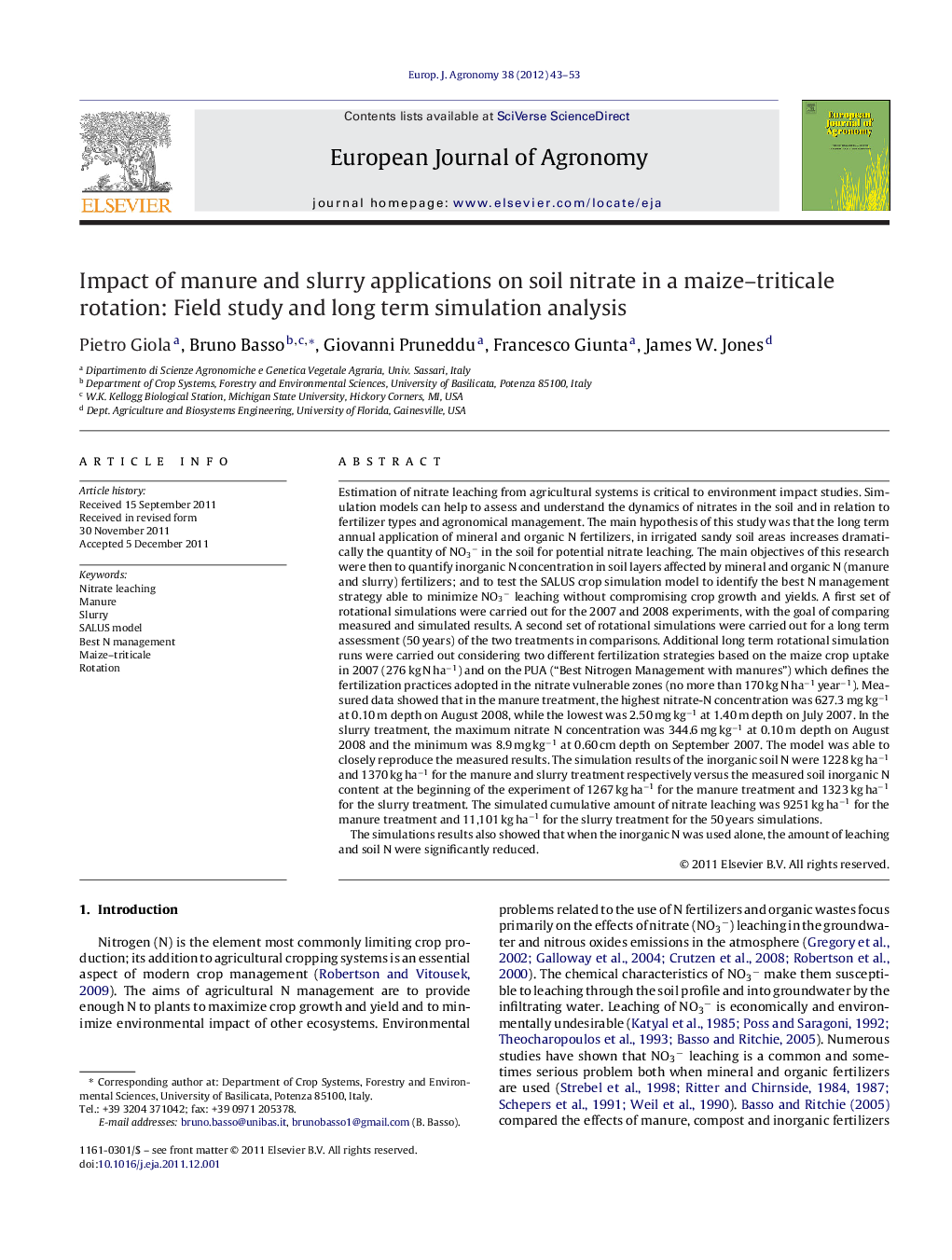| کد مقاله | کد نشریه | سال انتشار | مقاله انگلیسی | نسخه تمام متن |
|---|---|---|---|---|
| 4509205 | 1624488 | 2012 | 11 صفحه PDF | دانلود رایگان |

Estimation of nitrate leaching from agricultural systems is critical to environment impact studies. Simulation models can help to assess and understand the dynamics of nitrates in the soil and in relation to fertilizer types and agronomical management. The main hypothesis of this study was that the long term annual application of mineral and organic N fertilizers, in irrigated sandy soil areas increases dramatically the quantity of NO3− in the soil for potential nitrate leaching. The main objectives of this research were then to quantify inorganic N concentration in soil layers affected by mineral and organic N (manure and slurry) fertilizers; and to test the SALUS crop simulation model to identify the best N management strategy able to minimize NO3− leaching without compromising crop growth and yields. A first set of rotational simulations were carried out for the 2007 and 2008 experiments, with the goal of comparing measured and simulated results. A second set of rotational simulations were carried out for a long term assessment (50 years) of the two treatments in comparisons. Additional long term rotational simulation runs were carried out considering two different fertilization strategies based on the maize crop uptake in 2007 (276 kg N ha−1) and on the PUA (“Best Nitrogen Management with manures”) which defines the fertilization practices adopted in the nitrate vulnerable zones (no more than 170 kg N ha−1 year−1). Measured data showed that in the manure treatment, the highest nitrate-N concentration was 627.3 mg kg−1 at 0.10 m depth on August 2008, while the lowest was 2.50 mg kg−1 at 1.40 m depth on July 2007. In the slurry treatment, the maximum nitrate N concentration was 344.6 mg kg−1 at 0.10 m depth on August 2008 and the minimum was 8.9 mg kg−1 at 0.60 cm depth on September 2007. The model was able to closely reproduce the measured results. The simulation results of the inorganic soil N were 1228 kg ha−1 and 1370 kg ha−1 for the manure and slurry treatment respectively versus the measured soil inorganic N content at the beginning of the experiment of 1267 kg ha−1 for the manure treatment and 1323 kg ha−1 for the slurry treatment. The simulated cumulative amount of nitrate leaching was 9251 kg ha−1 for the manure treatment and 11,101 kg ha−1 for the slurry treatment for the 50 years simulations.The simulations results also showed that when the inorganic N was used alone, the amount of leaching and soil N were significantly reduced.
► Long term application of organic N fertilizers, in irrigated sandy soil increases NO3− leaching.
► Soil inorganic N were high for both manure and slurry treatment throughout the seasons.
► Measured and simulation results demonstrated the hazards associated with the excessive N applied.
► This study shows caution needs to be taken when managing organic fertilizers.
Journal: European Journal of Agronomy - Volume 38, April 2012, Pages 43–53